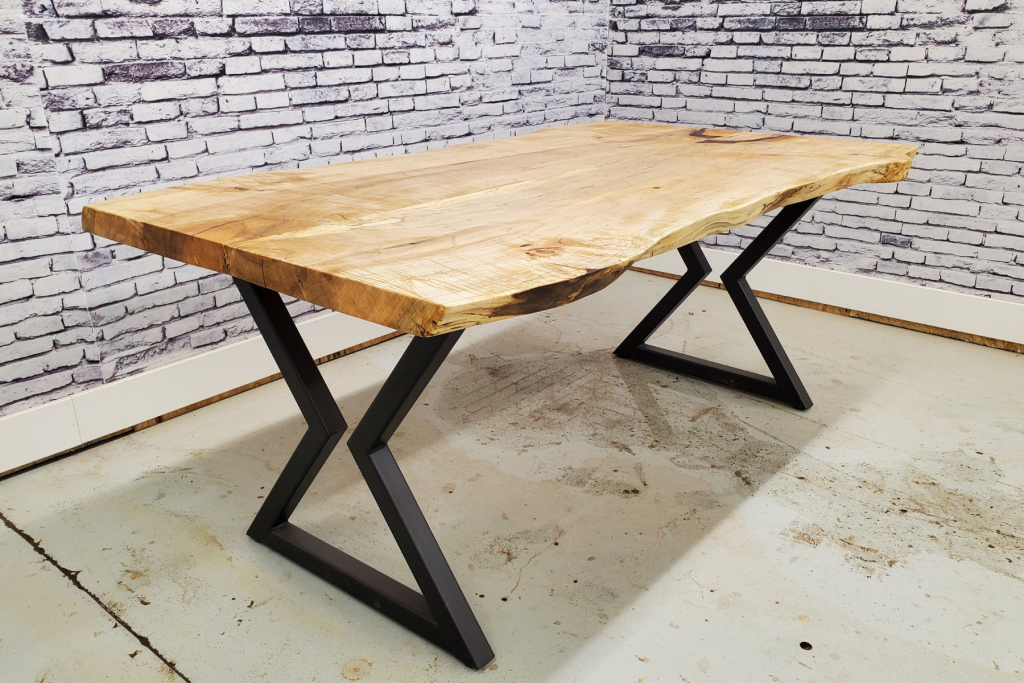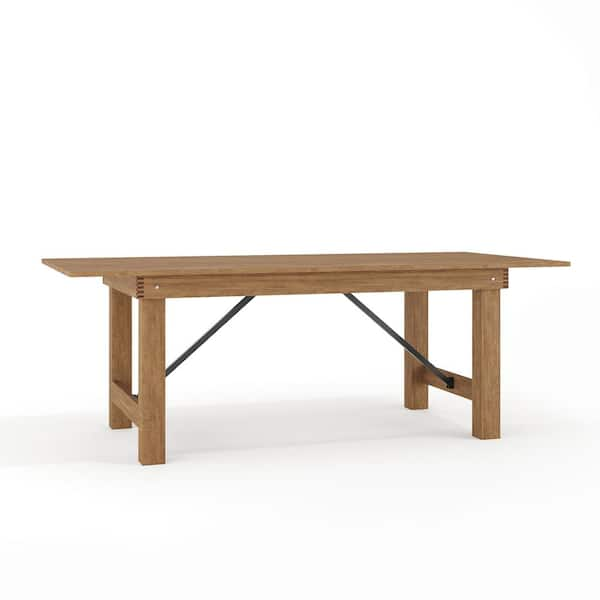Discover Affordable Beauty in High-Quality Dining Table Legs Wood
Wiki Article
Exploring the Different Types of Table Legs Timber for Your Dining Space
The option of eating table legs wood can greatly impact both the practical and aesthetic qualities of your dining space. Solid wood alternatives, such as oak and walnut, supply a timeless appearance with unmatched toughness, while crafted wood choices provide ingenious styles that imitate the richness of all-natural grains. Additionally, the expanding pattern of reclaimed timber presents a sustainable component that appeals to ecologically aware consumers. As we explore these different alternatives, it comes to be necessary to think about not only the aesthetic allure however also the useful ramifications of each product selection. What aspects should assist your choice?Strong Timber Options

Moreover, solid wood is renowned for its toughness and long life. Unlike crafted products, strong timber is less susceptible to bending and damage in time when effectively preserved. This makes it a suitable option for families or those who often host gatherings. Each item of strong timber is one-of-a-kind, showcasing specific attributes that contribute to the charm and character of the table.
Furthermore, solid timber can be finished in various methods, varying from natural oils to stained finishes, enabling house owners to customize their furnishings to match their design. In recap, picking solid timber for dining table legs not only guarantees architectural honesty however likewise boosts the visual appeal of the eating location, making it a rewarding financial investment for any home.
Engineered Wood Alternatives

Plywood, constructed from multiple layers of timber veneer, is particularly strong and stable, making it a superb option for dining table legs. Its layered make-up allows it to withstand changes in humidity and temperature level better than conventional solid timber. MDF, on the various other hand, offers a smooth surface area for paint or veneering, allowing developers to accomplish a refined look while maintaining structural honesty.
Particleboard, often utilized in budget-friendly alternatives, gives suitable strength and is lightweight, making it simpler to take care of. It might not be as resilient as plywood or MDF. It is crucial to think about the desired use and wanted aesthetic when picking engineered wood options. These materials not only boost the capability of dining rooms yet additionally permit greater design versatility, making certain that modern and conventional styles can exist side-by-side harmoniously.
Reclaimed Timber Includes
Redeemed timber uses a special blend of sustainability and personality, making it an increasingly preferred option for eating table legs. Sourced from old barns, factories, and other structures, reclaimed timber personifies a background that new materials simply can not replicate. Each piece lugs its own tale, noted by unique blemishes, knots, and differing grain patterns, which add to a table's unique visual allure.In enhancement to its aesthetic beauty, reclaimed timber is an ecologically friendly choice. By repurposing formerly used materials, it minimizes the need for brand-new lumber, thus assisting to preserve woodlands and minimize waste. This lines up with an expanding consumer choice for lasting practices in home furnishings.
In important source addition, recovered timber is frequently much more durable than freshly collected wood because of its age. The all-natural drying out procedure that redeemed timber undertakes cause a denser and more powerful product, making it much less at risk to warping and splitting. This enhances the long life of dining tables, enabling them to withstand the roughness of everyday usage.
Softwood vs. Hardwood
When choosing dining table legs, understanding the distinctions in between softwood and wood is critical for attaining both useful and visual objectives. They usually display an even more rustic appearance, making them ideal for country-style or laid-back dining spaces.On the other hand, hardwoods, sourced from deciduous trees like cherry, oak, and maple, are renowned for their thickness, toughness, and sturdiness. The detailed grain patterns and abundant colors of hardwoods provide a classic and advanced charm, making them suitable for formal eating settings. While hardwoods often tend to be much more costly and much heavier, their strength versus wear and tear frequently validates the investment.
Eventually, the option between softwood and wood for eating table legs must line up with your design vision, use needs, and spending plan, guaranteeing that your dining space mirrors your personal design while remaining practical in time.

Therapies and finishes
The visual charm and durability of table legs can be substantially boosted with numerous finishes and treatments. These processes not just shield the timber from damages but likewise raise its look, permitting it to enhance diverse indoor designs.One usual therapy is staining, which penetrates the wood and improves its natural grain while adding color. Stains supply an abundant, classy look, allowing property owners to match their furnishings with existing style. Alternatively, clear coatings such as polyurethane or varnish create a safety layer without modifying the wood's original color, guaranteeing durability against wear and tear.
In addition, natural oils, like tung or linseed oil, nurture the timber and offer a refined luster, all while being environmentally friendly. These oils enable the surface area to take a breath, stopping moisture build-up and potential bending.
For those looking for a rustic appeal, distressed or weather-beaten surfaces can be used to create an aged appearance, including personality to the piece. Eventually, read this post here the choice of finishes and treatments relies on individual preference, preferred aesthetics, and the certain wood kind, making it necessary to think about these aspects when picking dining table legs for your room.
Conclusion
Strong woods, engineered choices, and reclaimed alternatives each deal distinct advantages, providing to different choices and needs. Inevitably, the choice of wood type must straighten with wanted design, sturdiness, and ecological factors to consider, boosting the general eating experience.The choice of eating table legs wood can exceptionally influence both the functional and aesthetic qualities of your eating room - Dining Table Legs Wood. Strong wood options, such as oak and walnut, give the original source a traditional look with unmatched longevity, while crafted wood alternatives provide cutting-edge styles that resemble the richness of natural grains. Solid wood supplies an ageless high quality that can raise the general style of an eating space. Each piece of solid wood is unique, showcasing private attributes that add to the appeal and personality of the dining table
Furthermore, recovered timber is frequently a lot more sturdy than freshly harvested timber due to its age.
Report this wiki page